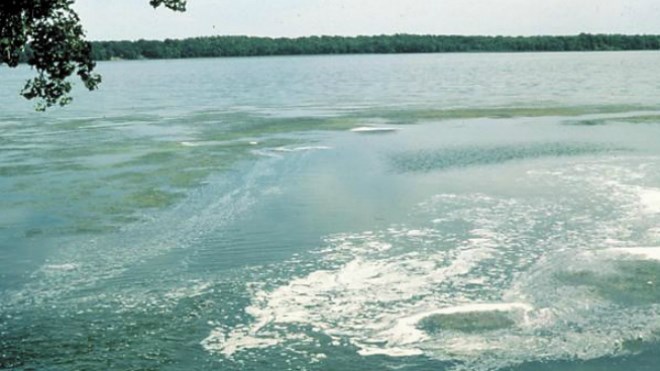The Sudbury and District Health Unit advises citizens to be on the lookout for blue-green algae blooms this summer.
Since 2006, the health unit has identified 59 blue-green algae blooms in 26 bodies of water within Sudbury and the surrounding district.
Blue-green algae, technically known as cyanobacteria, are microscopic organisms that are naturally present in lakes and streams. They are some of the oldest life on earth and are usually present in low numbers.
Blue-green algae can rapidly increase in warm, undisturbed surface water that receives a lot of sunlight. When this occurs, they can form blooms that discolour the water or produce floating rafts of scum on the surface of the water. Blue-green algae can be harmful to health in high quantities.
“Visible algal blooms may produce toxins at high enough levels to cause illness; therefore, using or drinking the water should be avoided,” said Allan McDougall, an environmental support officer with the Sudbury and District Health Unit, in a release. “People do not usually drink water contaminated with blue-green algal blooms because of its unsightly pea soup appearance and foul smell.”
At high enough levels, the algae toxins can irritate a person’s skin and, if ingested, cause diarrhea and vomiting. If a person ingests large amounts of toxin, they could suffer liver and nervous system damage.
The highest concentrations of toxins are usually found in blooms and scum on the shoreline. These dense accumulations pose the greatest potential risks to people and pets.
The health unit advises people a avoid using water from a blue-green algae bloom for drinking, bathing or showering.
Shallow drinking water intake pipes can pump in blue-green algae.
Boiling water with blue-green algae, or treating it with a disinfectant like bleach, only breaks open the algae cells and releases more toxins into the water.
Water filtration systems also may not protect against the toxins from the algae.
Residents should not eat the liver, kidneys, and other organs of fish caught in water with blue-green algae.
For more information about blue-green algae, call the Sudbury and District Health Unit at 705-522-9200, ext. 398 or visit their website at www.sdhu.com.
